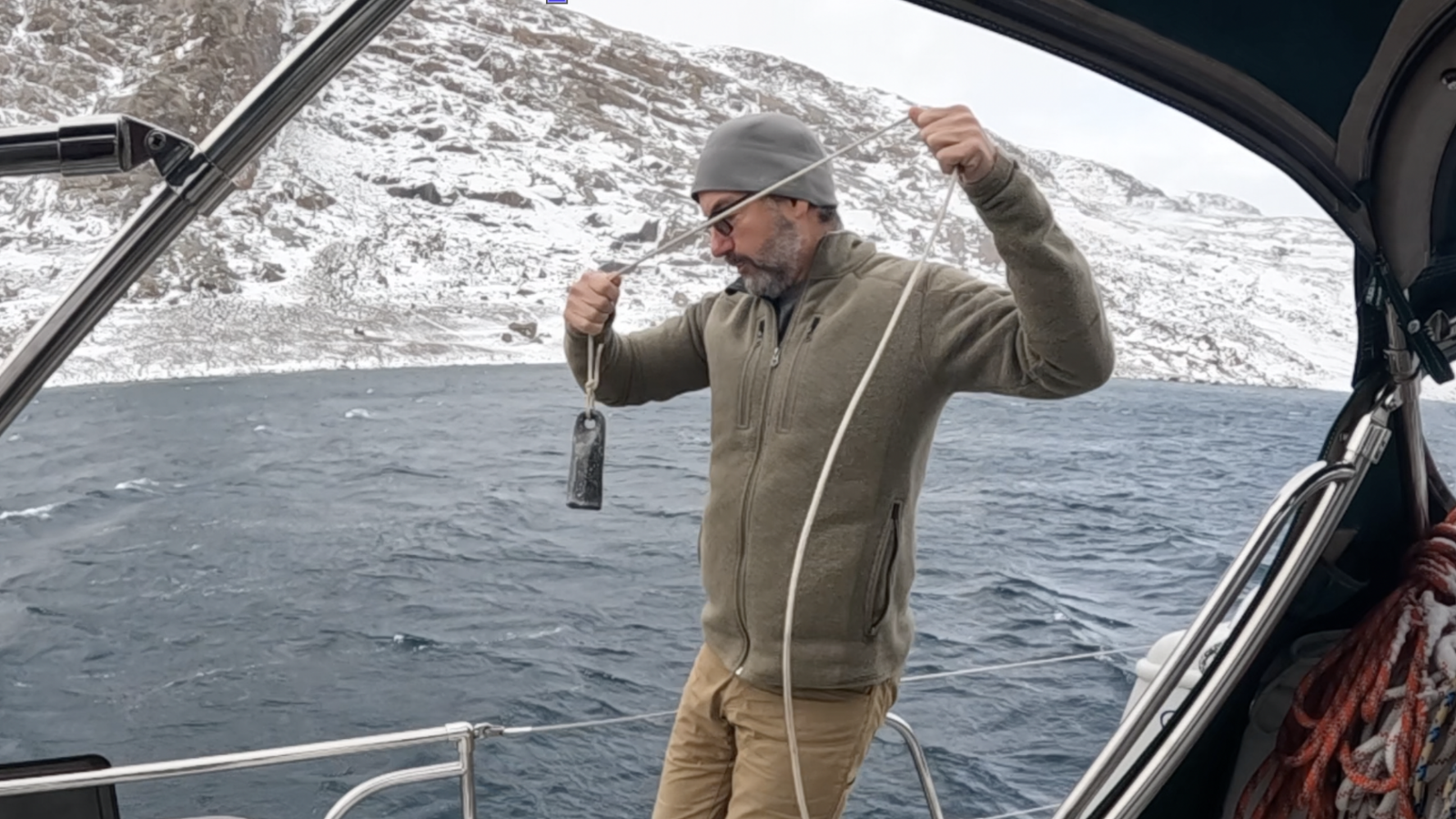As I write this, we’re hunkered down in “False Strait,” waiting out a cocktail of wind and snow. Apparently, the Northwest Passage wasn’t about to let us through without one last frosty initiation—snow, cold, wind, and a little bit of “are we sure this was a good idea?”
One Ocean continues to prove herself a solid platform for Arctic wandering, even if the mechanical world insists on keeping things interesting.
Diesel Fuel
Before arriving in Cambridge Bay, I had arranged fuel by email. The process was simple: one day’s notice, tie up to the town’s only pier, and wait. On the way in, we passed a cruise ship—our first close encounter. Let’s just say they still look out of place up here, but many people came out on their balconies to wave and take photos of us.
We topped up two tanks: 569 liters total, with 123 liters into the hurricane tank (aka: “liquid warmth”). The Yanmar held solid while sipping fuel at 1.1 GPH while pushing us along at 6 knots—very awesome. But the furnace has been guzzling extra due to nightly dips below freezing.
So, how much fuel did three weeks of Arctic chill really cost us? Answer: 123 liters, or about 11 gallons per week. Pricey? Maybe. Worth it when you’re surrounded by shifting ice floes at midnight? Absolutely. Keeping the cabin and crew warm is essential for doing our chores, navigating, writing, and just simply living in a warm, dry place is essential.
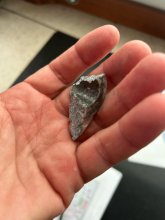
Broken Parts
On a passage between Johansen Bay and Cambridge, we had a lovely six-hour sail… right up until the boom decided to do a little hop, skip, and almost-break. We found a stray piece of aluminum on deck and realized it had popped off the boom toggle—aka the critical part that connects the boom to the mast. Without it, no mainsail. Oops.
Luckily, One Ocean is a cutter/ketch, so we’ve got four sails. With the mainsail down for the count, we still had three others to keep us moving. After motoring a bit, we sailed the last 40 miles into Cambridge Bay with mizzen/headsail.
Once docked, we tackled the repair. The old toggle was toast, and the pins were seized in place. Out came PB Blaster, a punch, a hammer, and a few carefully chosen “engineering magic words.” Once free, we sketched the part and sent specs to Northwest Rigging. They offered to make a stronger version from billet aluminum. Perfect!
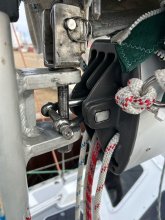
But Captain Mark wasn’t about to sit idle. He rummaged through spares and unearthed a heavy-duty 90-degree twisted shackle. A quick test fit and—voilà—temporary boom fix. With a little line wrapped around as a cushion, we had a serviceable (and surprisingly clever) backup.
Verifying the Problem
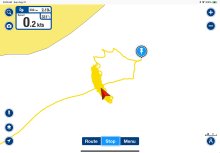
We had been underway for over 300 NM and two overnights on the way to False Strait. As you can imagine we were all ready to be anchored and get a full night’s sleep. The bay showed some soundings, but many of the charted information up here is incorrect and/or missing. There were a couple of other boats we knew that had anchored in the bay and new it was a good resting place. On the way in we should have passed over a shallow part at about 25 feet, however that was ‘fake charting’ the depth stayed closer to 90’. We went in further into the bay and found a nice shelf at 40’ that was nestled in behind a large bluff protected from the predicted windstorm. The anchor was deployed, set, and secured. The crew was happy with the spot, and we had settled out in 41’ of water with a mark/pin on our chart plotter showing the anchors position: this allows us to track our movements and ensure we are not dragging.
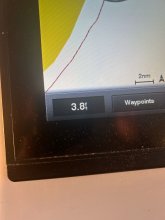
As soon as the drinks were poured, I looked at the depth sounder and it read 3.5’ What? Oh no! The crew went outside to get a visual – we hadn’t moved, and the water is usually clear enough to see down at least 20 feet. We could not see bottom and were considering re-setting the anchor. I stopped the crew and said “Let’s verify the Problem” maybe it’s just an erroneous reading on the fathometer. Luckily for us, Captain Mark had a Lead-Line onboard! For those who don’t know much about early sailors…. A lead-line is just a big chunk of lead with a hole in the bottom supported with a length of string marked of at each fathom (6’ intervals). You drop this over the side until it hits the sea floor, record the depth, and pull back onboard. The hole at the bottom should have a sample of the bottom (mud, sand, etc.) and you know how deep it is. All our early chart work was done by mariners in this way.
Mark dug ours out and we dropped it over the side. Yes, we had at least 40’ of water under our keel. Next it was time for a science lesson. The bay we anchored in was amazingly beautiful and had a river flow in at the head of the bay near where we were anchored. We liked this spot because this is often when we can see wildlife. Inspecting the chart of this area and Google Earth, there is a lake above this bay that is almost 9 miles long. When you have a bunch of fresh water dumping into a cold bay of sea water, the fresh water (less dense) usually stays on top for a while until it mixes in with current or wind. When this happens a modern depth sounder will pick up these two different densities and think this layer is ‘the bottom’ and that’s why we were getting erroneous depth readings. This also happens in my home water with varying temperatures that create a thermal level that will cause problems with some fathometers.
At any rate, we stayed put and the depth sounder on occasion did give us these shallow readings, but we had a good night’s sleep and got underway early the next morning.
Propane (a.k.a. Cookie Survival Fuel)
The Inuvik propane tank is still pulling its weight, powering everything from hot drinks to Mike’s cinnamon rolls (critical morale boosters). Cinnamon rolls were the latest new treat added to our list of accomplishments underway.
We know that propane is not available in Pond Inlet, but we’ve got one tank left for the dash south to Newfoundland. That will keep the crew happy as we turn south.
Things Working Well
Gold star this week goes to the Hurricane hydronic heating system. Three cozy zones, a boat with insulation, and a crew that isn’t shivering in their bunks. Warm boat = happy people. Thanks again to the Skagit Valley College rebuild crew for making this possible.
What’s Next
We turn south! With the Northwest Passage in the rear-view, we’ve got 1700 NM ahead, weather systems to dodge in the North Atlantic, and Canadian Baffin Island shoreline to look for duck-out or scenic stops. Engines will hum, sails will fly, and memories will stack up.
Life is good.
Cheers,
Mike
